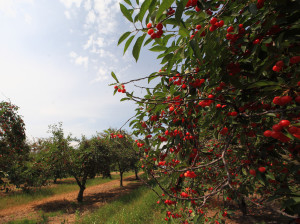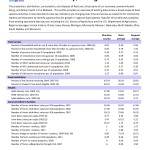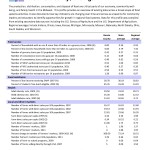When it comes to food systems, our culture has undergone some paradigm-shifting insights about everything from the products used to grow our sustenance to the distance it travels to get to us. Conversations are happening at every level, all over the country about how to change course so that we can feed ourselves in a way that’s actually beneficial to our bodies (hard to believe we haven’t figured that one out yet, isn’t it?), our communities, and our planet. Better still, talk has given way to action on a widespread scale as farmers’ markets spring up in every corner, “food deserts” are named and addressed, and institutions adopt policies that change the aim of their massive spending power.
Our Initiative is poising itself to join the food revolution by taking a unique regional view of its agricultural community and working to create a regulatory framework that not only refrains from infringing on its operation but actively supports it. Given the enormous scale of the ship we are trying to steer, its indispensable role in our lives, and the finely-connected web of roles and relationships that makes it run, it is beyond imperative that the various players at every scale understand each other. It would also likely be helpful if we all pulled in the same direction. The Michigan Good Food Charter and the northwest Michigan Food and Farm Network both offer larger policy frameworks within which to fit our regional model.
One of the most challenging things about innovation is the process of figuring out whether we have, in fact, built a better mousetrap – or just a different one. The University of Wisconsin is helping to make it possible for us to find out with its Food Systems Profile Project, a county-based assessment of food systems in Wisconsin, Michigan, Ohio, Indiana, Illinois, Missouri, Iowa, Minnesota, Kansas, Nebraska, and both Dakotas. The profiles track food access, food assistance, health data, the presence and activity of farms and farmers, and food distribution channels in each county, also presenting baseline comparisons with the state and regional averages. From the website:
“As capacity for food systems work increases educators have expressed a need for access to sources of data to inform community planning and programming on this topic and to serve as a baseline for measuring the progress of local initiatives. While sources of information are available through Extension already on specific food systems topics, such as agricultural production or food insecurity, no comprehensive data tool exists to support holistic planning around food systems (considering various aspects of the food system from production to processing to consumption and disposal) as a whole.”
The University of Wisconsin has helped us in our role as contributing authors to this chapter in history by setting the stage for our entrance, giving us a clear picture of existing conditions so that when and if the needle moves, we will be able to see how far and in which direction.
County based food system profile data can be found here: http://foodsystems.wisc.edu/



